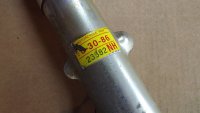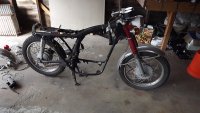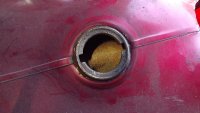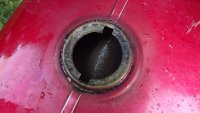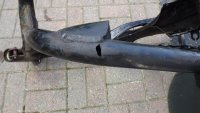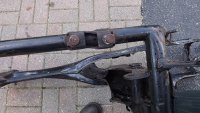jakeZ70
Been Around the Block
I picked up a basket case '68 CB 350 a couple of years ago, and I'm finally getting around to working on it. I purchased two project bikes around the same time just because they were so cheap, I couldn't pass them by. You can see the other here - http://www.dotheton.com/forum/index.php?topic=29346.0
On the up side the previous owner had engine and carbs professionally re-built, and I was given a pile of NOS parts. On the down side I was given coffee cans of nuts, bolts and brackets. Nothing was bagged and labeled, so figuring out what goes where, will take a little time.
As I finish the tear down and start cleaning up the frame and get ready for paint, I want to order some tires, so I can send them out to get mounted and balanced. I've done a lot of searching around DTT trying to decide what sizes to purchase, and there seems to be conflicting opinions. I believe the stock sizes are 90/90-18 Front and 100/90-18 Rear. I've seen a lot of builds where people are using 100/90-18 Front and 110/90-18 Rear, and even larger. I've read comments about how this effects handling. Is that true? How large can you go before they hit the fenders? Is it best to stick with the stock sizes?
On the up side the previous owner had engine and carbs professionally re-built, and I was given a pile of NOS parts. On the down side I was given coffee cans of nuts, bolts and brackets. Nothing was bagged and labeled, so figuring out what goes where, will take a little time.
As I finish the tear down and start cleaning up the frame and get ready for paint, I want to order some tires, so I can send them out to get mounted and balanced. I've done a lot of searching around DTT trying to decide what sizes to purchase, and there seems to be conflicting opinions. I believe the stock sizes are 90/90-18 Front and 100/90-18 Rear. I've seen a lot of builds where people are using 100/90-18 Front and 110/90-18 Rear, and even larger. I've read comments about how this effects handling. Is that true? How large can you go before they hit the fenders? Is it best to stick with the stock sizes?


